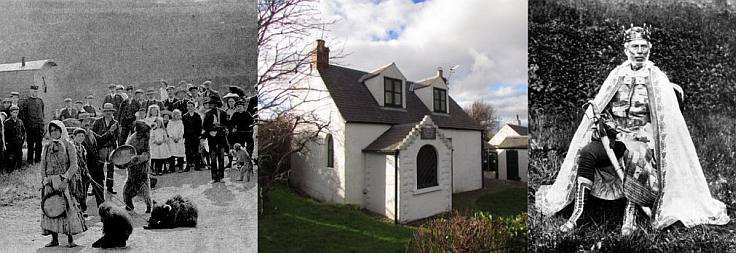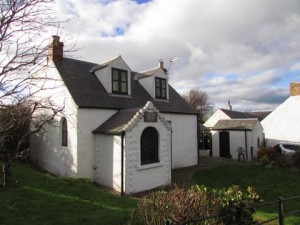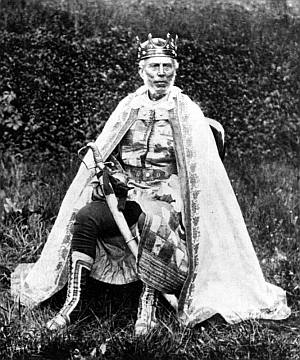For centuries gypsy families have played a significant part in the community life of North Northumberland and the Borders.
The first arrival of the Gypsies in England appears to have been about the year 1505. In the case of Scotland, that the Gypsies were in Scotland in the year 1506 is certain, as appears by a letter of James IV, of Scotland, to the King of Denmark, in favour of Anthonius Gawino, Earl of Little Egypt, a Gypsy chief.
Evidence suggests that gypsies originally descended from tribes living in India, arriving in Europe in the 15th century. The term ‘Gypsy’ was given to them during that period in the mistaken belief that they had originally come from Egypt, due to their black hair and dark complexion.
For centuries they were reviled or feared, often persecuted and considered by many to be a menace to society as they roamed the English and Scottish countryside, telling fortunes and selling contraband. The wandering tribes of gypsies making their way from one encampment to another were a common sight in many areas. They were seldom made welcome, and the words “tinker” and “mugger” are among the surviving reminders of their role in history.
Around 13 miles to the West of Wooler, Northumberland, over the border in Scotland, nestle the twin villages of Yetholm and Kirk Yetholm which were home to a large community of gypsies for more than 200 years. A so-called gypsy palace – in reality is a modest sized cottage – still stands, but otherwise there are no tangible signs that generations of the Romany race that settled there.
They are now honoured with a monument in Kirk Yetholm, which claims to be the country’s gypsy capital. A stone plaque on the green near the centre of the village informs visitors of the gypsy tribe that lived there from the 17th century onwards.
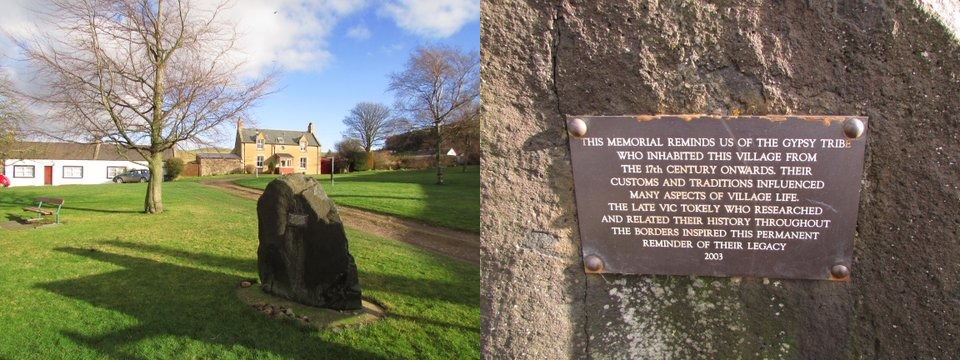
This stone monument on Kirk Yetholm green is dedicated to the gypsy tribe which lived there in the 17th century. On the right is the memorial plaque which is attached to the monument: it reads, “This memorial reminds us of the Gypsy tribe who inhabited this village from the 17th century onwards. Their customs and traditions influenced many aspects of village life. The late Vic Tokely who researched and related their history throughout the borders inspired this permanent reminder of their legacy. 2003.” Photographs: John Box.
In February 1540 they enjoyed Royal protection under King James V, and the head of the gypsy tribes at that time was acclaimed as “our lovit Johnne Faa, lord and earle of Little Egipt.” But from 1571 onwards, the Scottish strain of Romanies were persecuted by an Act of Stringency, aimed principally at bards, minstrels and vagabonds, and it was not until 1695 that their reputation and profile improved.
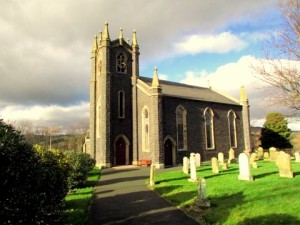
Yetholm Parish Church of Scotland in which both the Rev. John Baird and the Rev. Carrick Miller both served. Photograph: John Box.
In 1695 a gypsy named Young saved the life of Captain David Bennet at the Siege of Namur. In an unexpected gesture of generosity, the grateful officer gave cottages to the gypsies in Yetholm. They wintered in the Borders village and took to the roads in the spring to sell their wares and their horses. Smuggling tea, salt, and liquor from across the Border in England is said to have provided a valuable source of income.
The romantic but harsh lifestyle changed radically in 1839, when the Rev John Baird became minister at Yetholm. He persuaded the elders of the tribe to board out their children with local families so that they could become pupils at Scotland’s first ragged school.
Descendants of Johnne Faa continued to be crowned kings and queens of the gypsies, the last queen being Esther Faa Blythe. She succeeded to the title in 1861, at the age of 65. When Queen Esther died in 1875, it appeared she would be the last of the gypsy monarchs. But 23 years later, another Yetholm minister, the Rev Carrick Miller, organised a coronation for her son Charles, then 70 years old.
Charles Faa Blyth’s passing in 1902 marked the end of an era. “His death being notified to his friends at Yetholm, they and their acquaintances at Berwick, Spittal, Homcliffe, &c., met to pay the last honours to their old leader.” Although descendants of true gypsies still live locally, up to 2003 an Edinburgh housewife had been heir to the “throne” since 1945, but showed no interest in claiming the title.
Gypsies have been a part of the English and Scottish border countryside for hundreds of years. In many of the local towns in North Northumberland and the Scottish Borders in which the gypsies settled their descendants are now successful businessmen in their own right.
The gypsy dialect can be still be heard in the accents of the population in the towns and villages of North Northumberland. Probably the most noticeable is in the accent of locally born residents of Berwick-upon-Tweed.
Sources:
The Scotsman Newspaper (Edinburgh)
James Simson. History of the Gipsies. (1866)
Photograph: Banner Image of Gypsy Palace – John Box.
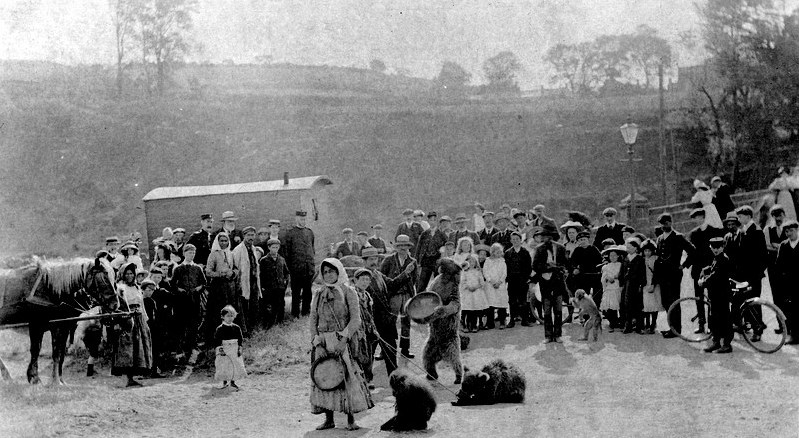
The photograph above shows Serbian gypsies at Wooler Haugh in Northumberland around 1910 – Courtesy of Berwick Record Office, Ref: BRO 426-1229.

